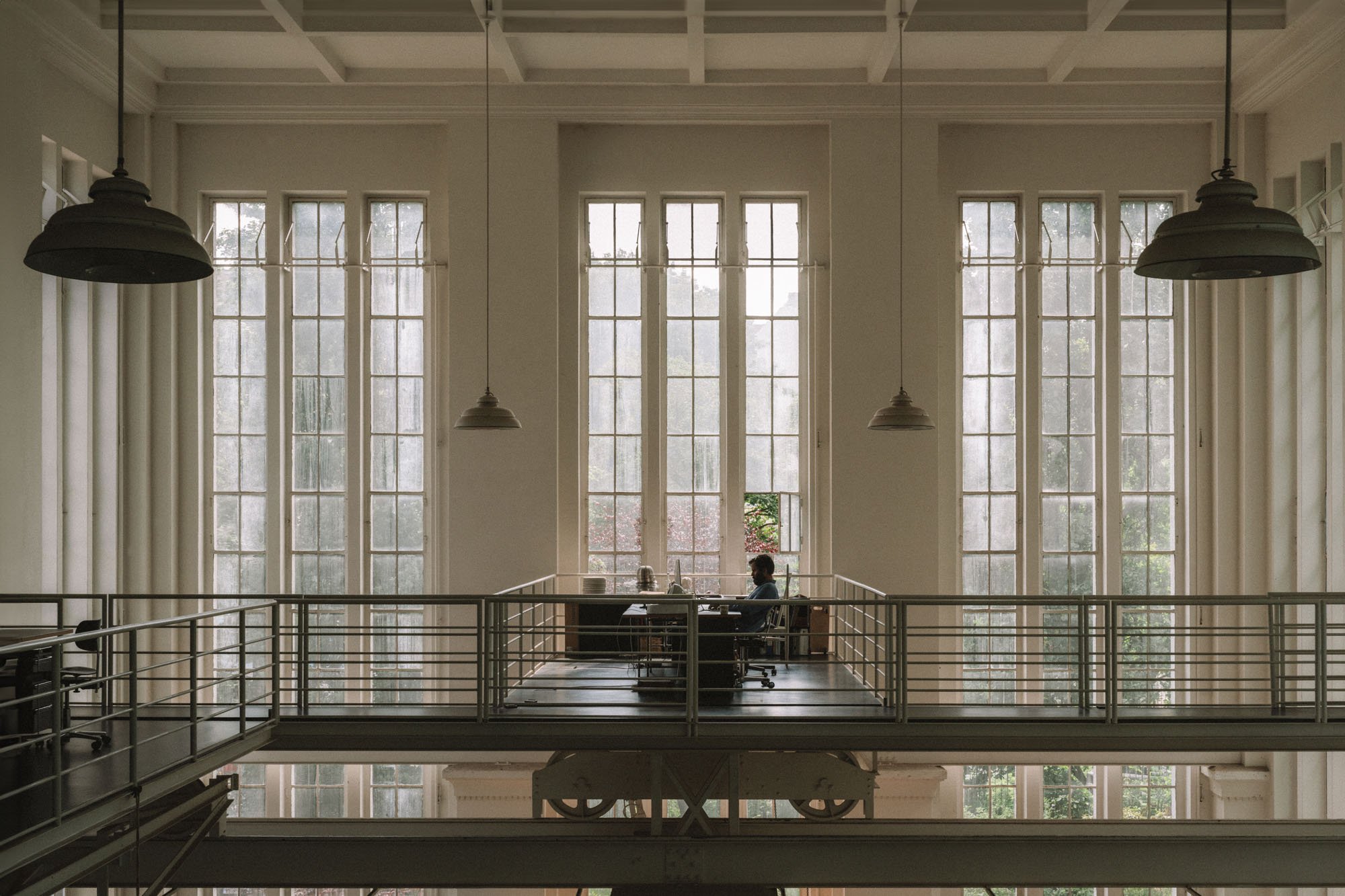Their current exhibition, “Bonne Chance,” at the Centre Pompidou-Metz, which will be on view until April 2024, explores life as a game-like scenario, where different stages affect our reactions and behaviors. Daily environments are organized in such a way that logic no longer applies. The audience—the players—must navigate the space like a labyrinth, never quite knowing what the next turn might bring. In one moment, they find themselves in a public restroom. A second later, they will be in a laboratory, a CCTV surveillance room, or a morgue. While the exhibition setup evokes the uncertainty of a game, this round, however, cannot be won. Rather than trying to leave the show as a winner, or loser, the artists invite the visitors to question the game’s structure and redefine the rules by which they are playing.
One of the characters that form part of the show in Metz is also prominently displayed in the artist’s studio. It is the life-like sculpture of a slipped tightrope walker who, with one hand, clings onto a wire stretched across the room. On his T-shirt, the question “What’s left?”, which is also the work’s title, reflects on the young man’s future but also success, failure, and the immediate outcome of the scenario.
Not far from the unlucky acrobat, a black bronze sculpture shows a young man, a lifeguard, sitting on his high-rise chair. Absorbed in a book, he seems to be forgetting about his environment and his task to keep a watchful eye. Adjacent to him, we notice a sculpture of a vulture perching on a dead tree, critically overlooking the space. Across the room, an object resembling two persons kissing while their faces are covered with a white cloth is a nod to René Magritte’s painting “The Lovers.”

